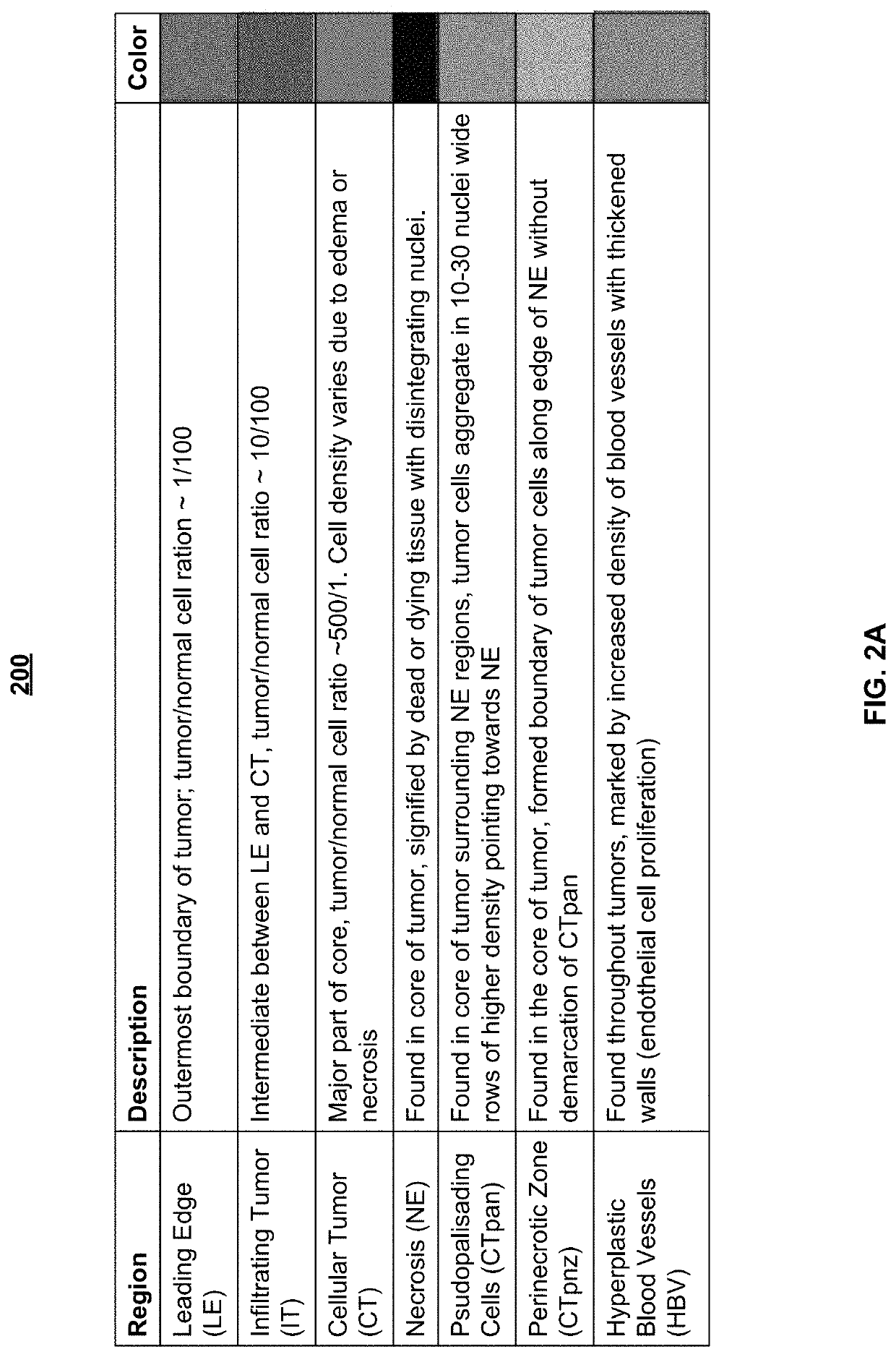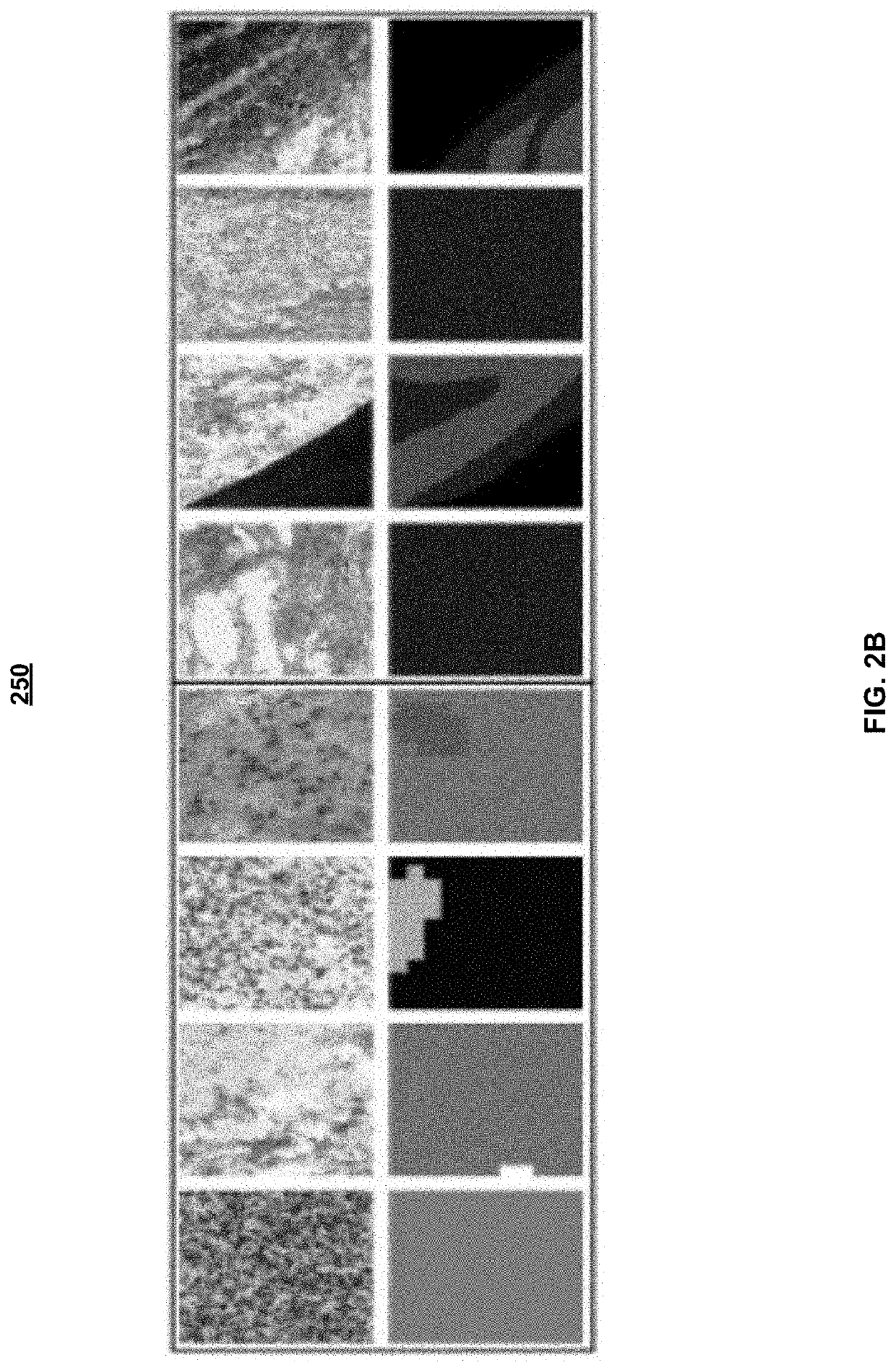System and method for automatic assessment of cancer
a cancer and automatic assessment technology, applied in healthcare informatics, instruments, image enhancement, etc., can solve the problems of difficult early detection and treatment, poor prognosis of patients diagnosed with gbm since the 1980s, etc., to reduce the workload of neuropathologists, accurate data-driven approach, and reduce the effect of diagnosis tim
- Summary
- Abstract
- Description
- Claims
- Application Information
AI Technical Summary
Benefits of technology
Problems solved by technology
Method used
Image
Examples
examples
[0161]Following the 20 training epochs, the tumor feature segmentation algorithm achieved a training loss of 0.438, validation loss of 0.427, and validation accuracy of 84.70%. The network achieved an accuracy of 86.02% on the test set of images. Throughout the training process, both the training and validation loss decreased significantly during the first epoch, starting at 3.024 and 3.044 respectively, and gradually decreased before leveling off in Epoch 20. Accordingly, the validation accuracy started at 0.00% and significantly increased during the first epoch before leveling off at 84.70%, as shown in the graphs of FIGS. 11A at 1100 and 11B at 1150.
[0162]Throughout the training process, several levels of feature segmentation were achieved, as shown in FIG. 12 at the table 1200. They are as follows:[0163]Stage A (epoch 1): High accuracy was achieved in classification of single-tissue tiles of the necrosis class. From a biological standpoint, this result was expected, as necrosis ...
PUM
 Login to View More
Login to View More Abstract
Description
Claims
Application Information
 Login to View More
Login to View More - R&D
- Intellectual Property
- Life Sciences
- Materials
- Tech Scout
- Unparalleled Data Quality
- Higher Quality Content
- 60% Fewer Hallucinations
Browse by: Latest US Patents, China's latest patents, Technical Efficacy Thesaurus, Application Domain, Technology Topic, Popular Technical Reports.
© 2025 PatSnap. All rights reserved.Legal|Privacy policy|Modern Slavery Act Transparency Statement|Sitemap|About US| Contact US: help@patsnap.com



